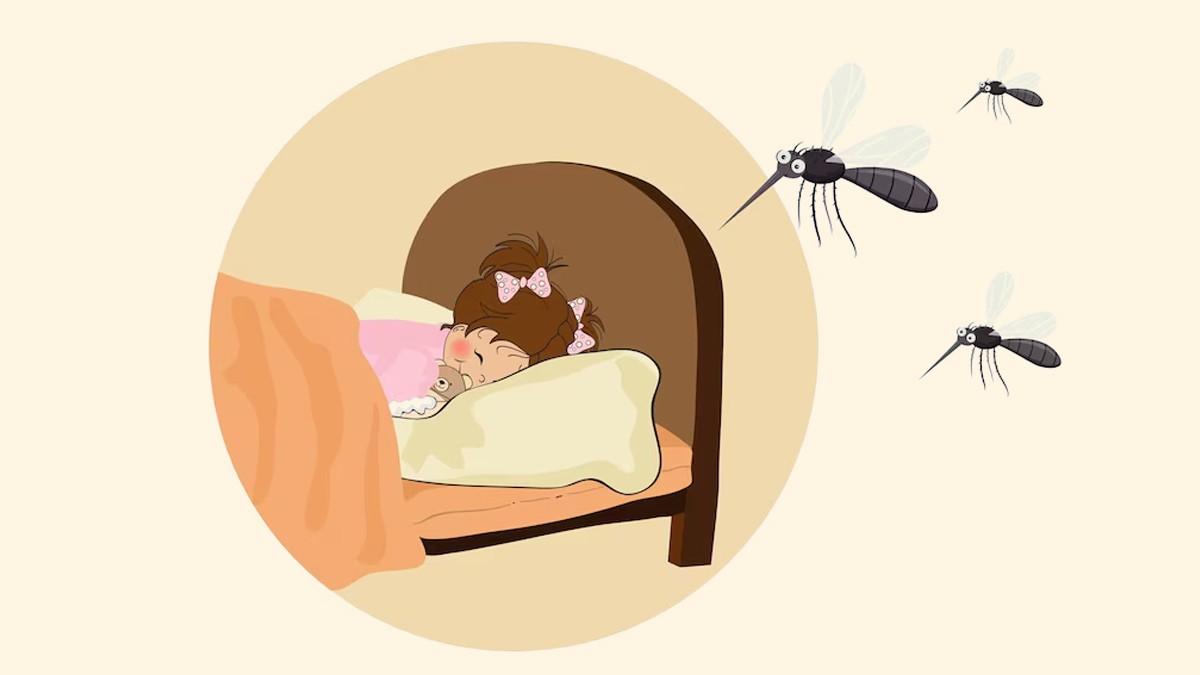
At the onset of the rainy season, we see a steady increase in patients dealing with symptoms like fever, loose stools, vomiting, and body aches. While some conditions, such as the flu can be managed at home, others can be deadly if not diagnosed and treated promptly by a doctor. But how do you know if your symptoms point to something as common as monsoon fever or something more serious like dengue? We spoke to our expert Dr Rajmadhangi, MD - General Medicine, Apollo Spectra Hospital, Chennai, who explained the key differences between monsoon fever and dengue.
Table of Content:-
Differences Between Monsoon Fever and Dengue
While both monsoon fever and dengue present symptoms like fever, pain, and fatigue, there are key differences between the two conditions. Understanding these differences is important for accurate diagnosis and effective treatment. Dr Rajmadhangi explained these two conditions as follows:
Onset and Symptoms
Dengue Fever

It commonly begins with a sudden onset of severe body pain and a distinct rash. The initial symptoms include:
- High Fever: An abrupt temperature rise, often reaching 104°F (40°C)
- Severe Headache: A deep, intense pain commonly felt behind the eyes
- Muscle and Joint Pain: Extreme pain in the muscles and joints
- Abdominal Pain: Upper abdominal pain with nausea and a feeling of fullness
- Rash: A rash that develops as the fever subsides
Most people with dengue virus may not exhibit symptoms, but severe dengue can develop 1 to 2 days after the initial fever has subsided. Warning signs of severe dengue include:
- Persistent Vomiting
- Severe abdominal pain
- Bleeding from gums or nose, or blood in the stool or vomit
- Unexplained bruising
- Shortness of breath or breathing difficulties
- Extreme fatigue or restlessness
The global risk of dengue affects between 2.5 and 3.6 billion people, with annual cases ranging from 50 to 390 million. Every year, roughly 500,000 individuals are hospitalised due to dengue, which has a case fatality rate of 2.5%, as stated by the Multidisciplinary Digital Publishing Institute (MDPI).
Monsoon Fever

Monsoon fever, on the other hand, encompasses a range of infections common during the rainy season, with symptoms developing more gradually. It is often associated with:
- Slow Onset of Symptoms: Symptoms develop gradually
- Common Infections: Includes food-borne illnesses like hepatitis A and E, enteric fever (typhoid), and vector-borne diseases, such as dengue and chikungunya
- Breathing Issues: Symptoms may include cough and cold
Also Read: Dengue Prevention During Monsoon: Essential Tips For Staying Safe
Diagnostic Approach
Dengue Fever
Dengue diagnosis requires knowledge of the danger period, which begins 4-5 days after fever onset. During this period, critical symptoms to watch for include:
- Low Blood Pressure: Indicates severe dengue
- Fluid Accumulation: Fluid may accumulate in the lungs and abdomen
- Decline in Platelet Counts: A decrease in blood platelet levels
- Bleeding Symptoms: Symptoms like bleeding from gums or skin
Monsoon Fever
Monsoon fever diagnosis involves comprehensive medical evaluation due to its varied causes. Key diagnostic steps include:
- Blood Tests: To identify specific infections
- Physical Examinations: To assess symptoms and overall health
Treatment and Management
Dengue Fever
Early recognition and management of severe dengue are crucial. Treatment focuses on:
- Hydration: Maintaining fluid balance
- Medical Supervision: Regular monitoring for complications
Monsoon Fever
For monsoon fever, early diagnosis and appropriate treatment are essential to avoid complications. Management may involve:
- Antibiotics and Antiviral Medications: Based on the specific infection
- Rest and Hydration: General supportive care
Also Read: Dengue's Impact on Platelet Count and Expert Dietary Tips to Boost It
Key Differences Between Monsoon Fever And Dengue
Here are the differences in symptoms between dengue and other monsoon illnesses:
- Fever: Dengue fever is typically very high, often reaching up to 104°F, and other monsoons are usually accompanied by lower fever.
- Respiratory and Gastrointestinal Symptoms: The common symptoms like cough, runny nose, and loose stools are generally not associated with dengue but are common in other monsoon illnesses.
- Pain: Joint pain, headaches, and backaches are extremely severe in dengue, much more so than in other monsoon diseases.
- Rash: A rash is a common symptom of dengue but may not be present in other monsoon illnesses.
- Bleeding: Another complication of dengue can cause a bleeding problem, which is rarely seen in other monsoon ailments.
Bottomline
Dr Rajmadhangi concluded, “Understanding the differences between monsoon fever and dengue is crucial, especially during the monsoon season. Being aware of the symptoms, the severity of dengue, and the warning signs of severe dengue can help in timely diagnosis and treatment. Always consult a doctor if you experience any concerning symptoms, and take preventive measures, such as using mosquito repellents and keeping your surroundings clean to reduce the risk of mosquito bites.”
[Disclaimer: This article contains information provided by an expert and is for informational purposes only. Hence, we advise you to consult your own professional if you are dealing with any health issues to avoid complications.]
Also watch this video
How we keep this article up to date:
We work with experts and keep a close eye on the latest in health and wellness. Whenever there is a new research or helpful information, we update our articles with accurate and useful advice.
Current Version